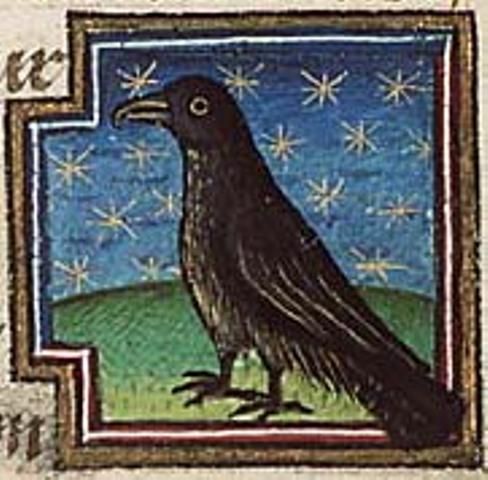















Dian Cecht
Irish: swift, powerful judge?
God of medicine; one of the Tuatha De Danann. Grandfather of Lugh Lamhfada and maker of the silver arm of Nuada, and who killed his son Miach for being a more skillful doctor. His father is the Dagda, according to the poem "Mag Corainn" in the Dindsenchas, while the Lebor Gabála Érenn gives his father as Esarg son of Net. As the LGE also makes the Dagda a descendant of Net, the two are related at any rate.
According to The Second Battle of Magh Turedh, when Nuada, king of the Tuatha Dé Danann had his arm cut off, he was denied kingship, as all kings of the TDD had to be physically flawless. Thus, the kingship was forfit. The Fomorians--the dark gods who inhabited Ireland before the TDD--demanded that Bres, son of Eri (TDD) and Maeth Sceni (a Fomorian) should be made king. The TDD agreed, but in doing so, allowed a tyrant onto the throne.
So while the TDD suffered, Dian Cecht worked on creating a silver arm for Nuada, hoping this would help him regain the throne--this is the cause for Nuada's full name, Nuada Airgentlamh. However, Dian Cecht's son Miach was more skillful than his father, and was able to magically create a new, biological arm for Nuada. Dian Cecht was so jealous that he struck Miach four times with his sword--each time, Miach would heal himself, until the fourth time, when Dian Cecht struck through the skull to the neck. Out of grief, Dian Cecht buried him, and 365 herbs grew on the grave. Airmed--Dian Cecht's daughter--seperated the herbs to their properties, but he scattered them again, so that "no one knows their proper cures unless the Holy Spirit should teach them afterwards" (a Christian interpolation; likely that only the leeches should know them). It is also said that the 365 herbs were put in the Well of Slaine, which could heal the mortally wounded, and was presided over by Dian Cecht and Airmed. It was to this well that Goibniu the smith came to be healed of his spear-wound during the Second Battle of Magh Turedh.
At this time, Dian Cecht's other son, Cian, had met the Fomorian princess Eithne, and had sired on her a son, who was named Lugh Lamhfada, who was raised by Manannán mac Lír and Tailtiu. Lugh then came to Ireland and was able to win the throne back for Nuada. It is intereting to note that while Lugh's maternal grandfather was Balor of the poisonous eye, his paternal grandfather was Dian Cecht the doctor.
Dian Cecht is attributed a medical tract, found in the manuscript Phillipps 10297 (now G 11) in the National Library of Ireland. The manuscript is from the fifteenth century, but linguistically, the tract is much older. Aside from various judgements of payment for medical procedures based on social class, it has an interesting paragraph about what it calls "The Twelve Doors of the Soul" sometimes translated as "The Twelve Porals of Life":
There are twelve doors of the soul in the human body: (1) the top of the head, i.e. the crown or the suture, (2) the hollow of the occiput, (3) the hollow of the temple, (4) the apple of the throat, (5) the spoon of the breast, (6) the armpit, (7) the breast-bone, (8) the navel, (9) the side {?}, (10) the bend of the elbow, (11) the hollow of the ham, i.e. from behind, (12) the bulge of the groin, i.e. the bull sinew, (13) the sole of the foot.Yes, they say twelve, but list thirteen. Why, I'm not sure. On the one hand, it may be a list of vulnerable points in the body--places where it is easier to be wounded, and to which a doctor must pay attention. On the other hand, it may have a more esoteric meaning--this is in a tract named for Dian Cecht, the god of medicine who has a well of rebirth; it seems to be almost like an Irish chakra system. The term "doors of the soul" may have a dual meaning, both of those areas which are vulnerable, and also to areas which may have been believed to be special areas of the body.
SOURCES
The Second Battle of Magh Turedh--various publications, websites, but particularly:
Cath Maige Tuired: The Second Battle of Mag Tuired. Elizabeth A. Gray. Kildare: Irish Texts Society, 1982. No. LII. URL: http://www.ucc.ie/celt/published/T300010/index.html.
"The Judgements of Dian Cecht." trans. D. A. Binchy. Eriu. Vol. XX. Dublin: Royal Irish Academy, 1966.
Gwynn, Edward. The Metrical Dindshenchas, Vol. IV. Dublin Institute for Advanced Studies Dublin (1991 [first published 1906; reprinted 1941]) URL: http://www.ucc.ie/celt/published/T106500D/index.html.

Back to "D" | Back to JCE
Home
Mary Jones © 2004